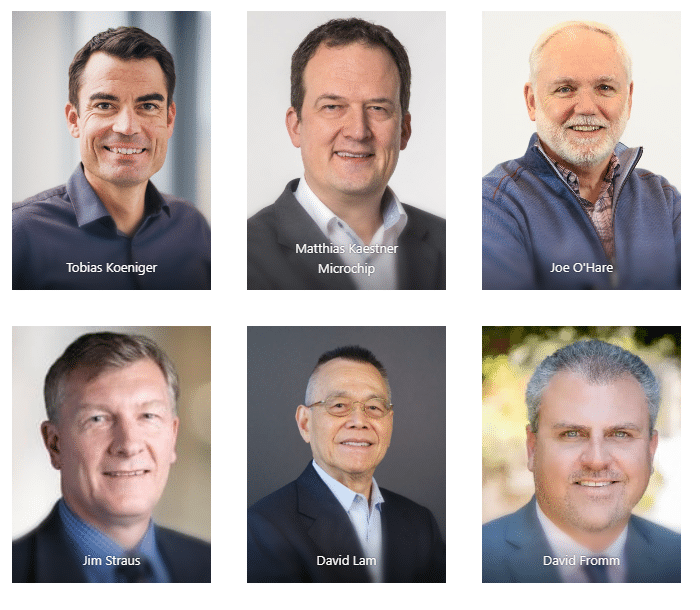Each year, Semiconductor Digest turns to industry leaders and analysts to get their viewpoints on what they expect to see in the coming year in terms of critical tech and business trends. Hot topics continue to be supply chain concerns, the impact of the CHIPS Act, the role of Artificial Intelligence, advanced packaging, 3D integration and chiplets.
MEMS, now a forty-year-old industry, continues to reinvent itself. In 2025 and beyond, we can expect to see existing MEMS devices reimagined in new thin-film piezoelectric materials such as scandium aluminum nitride (ScAlN) and lead zirconate titanate (PZT), which will dramatically improve functionality, precision, and durability.

2025: A Blend of Challenges and Opportunities: The semiconductor industry remains a dynamic landscape, propelled by technical advancements and shifting market demands.

Navigating Shifts in Semiconductor Demand: What to Expect for 2025: I would expect numbers for wafer fab equipment (WFE) to be between 5% and 10% growth, reaching the low $100 billions for 2025.

AI, Device Complexity Will Continue to Drive Packaging and Test Demands: The products used to power today’s AI/ML applications are far more complex than anything our industry has seen before and will only become more complex with the influx of generative AI in consumer products like smartphones and laptops.

A Shift to Software-Defined Vehicles: Microchip Technology’s perspective on the automotive industry highlights the significant shift towards Software-Defined Vehicles (SDVs) and the increasing reliance on open-standard in-vehicle networks.

Energy-Efficient, High-Performance AI Inference is Essential: The pressing need for seamless, real-time processing calls for solutions purpose-built for continuous, energy-efficient inference workloads. Metrics like inference-per-second-per-dollar-per-watt (I/S/D/W) are emerging as key indicators of value, underscoring efficiency and sustainability.

MRAM’s Path Forward in a Demanding Landscape: Spin-transfer-torque magnetoresistive random access memory (STT-MRAM) continues to stand out by meeting critical demands for high endurance, non-volatility, and low latency, particularly in applications at the far edge.

MEMS Mirrors Will Fix Automotive LiDAR: Driven by advancements in the MEMS mirrors used in light detection and ranging (LiDAR), Tier 1 suppliers and automakers will begin to design more accurate, resilient, and affordable perception systems in automotive vehicles.

Sustainability is Essential for Long-term Success: At Edwards we are especially focused on sustainability. Our vacuum pumps and abatement systems are essential to remove and treat excess process gases and by-products, and we see significant opportunities as semiconductor manufacturers seek to improve the sustainability of their manufacturing processes.

Wafer Bonding is the New Semiconductor Scaling: To continue scaling the power density of future semiconductor components, there is no way around 3D integration. Depending on the system requirements, various bonding technologies such as solder connections, thermocompression and hybrid bonding can be selected.

The Increasing Importance of High-Performance Power Management in the Semiconductor Industry: Power management devices, which include voltage regulators and power converters, are critical components that ensure optimal energy consumption and performance in the most advanced electronic systems, including artificial intelligence (AI) and machine learning.

Power Density and Sustainability Shaping Semiconductor Landscape: As devices become more compact and powerful, traditional packaging methods are no longer sufficient. Techniques such as system-in-package (SiP) and 3D packaging will gain traction, enabling higher performance while minimizing space and volume.

AI Momentum Continues: The optical interposer, which POET pioneered, is gaining traction as a platform technology that can meet the high-volume production requirements of AI clusters while reducing cost and power consumption.

Expanded GEM300 Standard Usage and Cybersecurity: As we look toward 2025, one trend we observe gaining momentum is the increased adoption of GEM300 standards for wafer sizes smaller than 300mm.

Robotics-Driven Automation: Transforming the Semiconductor Equipment Supply Chain: Embracing automation will have several benefits for the industry, not the least of which is enabling scalable production solutions that meet the evolving needs of customers during their business cycles.

Sustainability and Photonics: For managing the energy needed for data processing, a key future technology will be silicon photonics, which enables seamless integration of optical components like waveguides, switches, and modulators with electronic circuits on a single silicon chip.

Focus on Integrated Photonics and Chiplets: In the coming year, I expect to see more prototype designs making use of integrated photonics. The demand for better performance is pushing photonic technology toward commercial status and the market is more than ready.

AI, Networking/Communications, Personal Mobility and Aerospace-Defense to Drive Changes: As the heartbeat of intelligent, connected electronics, precision timing will play a key role in 2025’s expansion. Precision timing will drive innovation across industries like healthcare, manufacturing, FinTech, and cybersecurity.

MEMS Move to 300mm: The move to 300mm wafers as a substantial leap forward for the MEMS industry in manufacturing automation and cost-effectiveness, yet many challenges remain.

Photonic Integrated Circuits – Driving Quantum Technology: Innovations around photonic integrated circuits (PICs) have the potential to transform our ability to meet the demands of our increasingly data-driven world.

Embracing the Future: Optimizing Automated Test Equipment for the Era of AI and Beyond: The role of advanced ATE systems will become even more critical; smaller geometries increase test sensitivity requirements, demanding ATE systems with higher precision and accuracy.

Exciting Advancements in Litho Technologies Enabling Next-Generation Multi-Chip Systems: As advanced packing gains momentum, the industry will be looking to novel, creative processing solutions to handle the integration imperatives of today – and tomorrow.

The Future is Bright for the Photomask Industry: Increasing investments in critical photomask infrastructure yields benefits for the entire mask-to-wafer ecosystem.

AI is the Driving Force: This year continues to anticipate the impact of AI as the driving force behind optimism in our industry.

New Packaging Approaches Drive Cost & Efficiency in 2025: The fast adoption of chiplets will continue to drive wafer-level packaging (WLP) growth in 2025, as semiconductor companies continue to invest in various types of packages for diverse applications.

Opportunities Abound for Semiconductor Equipment in 2025: As we look ahead to 2025, we’re seeing three major trends: a growing compound semiconductor market, the resurgence of wet bench technology and growing workforce development needs.

A Paradigm Shift in Wire Interconnection: The drive towards high density (HD), ultra-high density (UHD) and alternative substrates, including glass, will be transformative for North American wire interconnection manufacturing in 2025.

The Future of Flex Is Here: A rapidly accelerating trend is the proliferation of complex assembly directly onto flexible substrates.

Power efficiency and computational flexibility in AI/ML processors: Compression, especially after quantization, can help reduce the bandwidth and large storage required by model weights, thereby reducing power consumption.
Click here to read the 2025 Executive Viewpoints in Semiconductor Digest magazine.






























